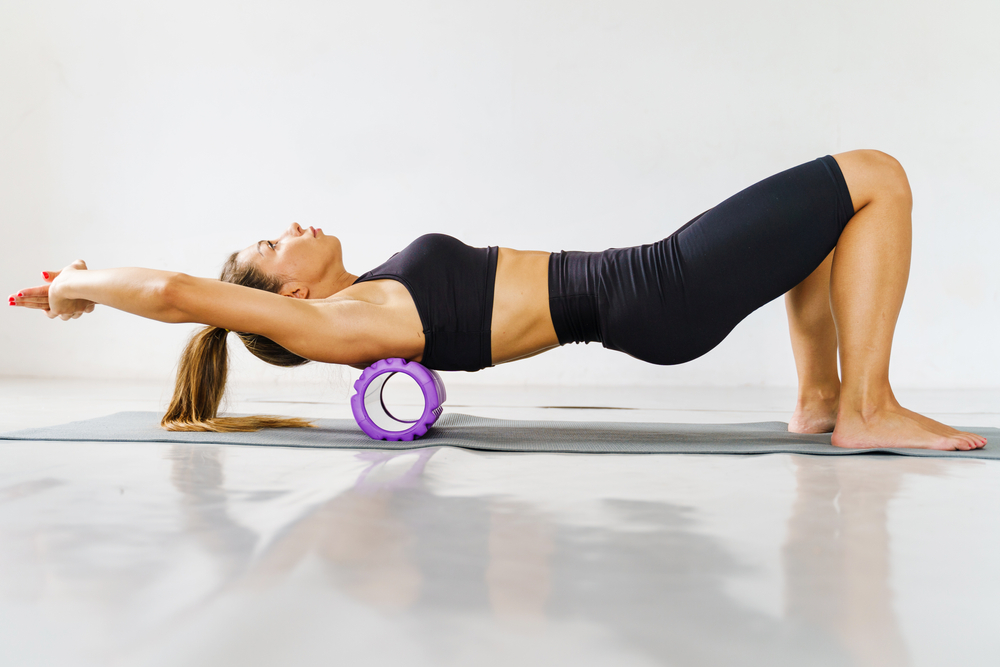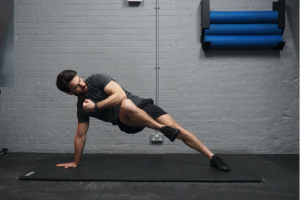Why foam rolling should be a part of your workout routine

Finding a favourite go-to exercise routine is key in order for it to be easy, realistic and sustainable. However, in order for us to develop and not to get too bored after a while, it is also important that we challenge ourselves and change activities from time to time. We don’t want our muscles to become too familiar and comfortable with our exercises, and we also tend to forget about the time when we are busy doing something new, rather than doing an exercise for the 105th time. So, if you’re in the mood for some new ideas and inspiration, as well as challenging your body a little extra with some added balance and muscle burn, add foam rolling to your workout routine.
Foam rolling can help us with upgrade our workout and make sure our muscles and fascia feel flexible and smooth, free from tension and pain. Contracted muscles, as well as a heavy and stiff feeling in the body, are very common, not just for people who exercise a lot, but for everyone. Every day activities, such as walking around, sitting down and even gravity affect our bodies, and especially our fascia (a thin layer wrapping around our muscles), which can start to feel tight and cause discomfort if we don’t “hydrate” it by massaging it and making it smooth and flexible.
THE BENEFITS OF FOAM ROLLING
Boosting circulation and lubrication to the body’s tissues and organs
Foam rolling helps to “hydrate” and “lubricate” the joints, which helps reduce inflammation in the body. It gives the bone a better support system and it also improves blood flow and helps to oxygenate the blood. An increased flow of energy is also often experienced, and although it can feel uncomfortable at first, letting the foam roller release muscle tension and pain can feel incredible. Applying pressure to certain pinpointed spots on ligaments, tendons, and muscles will stimulate the tissue and enhance optimal recovery and performance.
Improving our range of motion and flexibility
It improves our movements in general, since hydrated body tissues move past one another with less friction. This also means that we decrease our risk of injury, as well as recovery time if we have already been injured.
Boosting lymphatic drainage
Our lymphatic system is almost like our body’s “garbage disposal”, helping to flush toxins from the body. Foam rolling helps with “blockages” in the lymphatic system that can make us feel tired, heavy, swollen, and even make us sick.
Myofascial release
In pretty much in the same way as a deep tissue massage works, a foam roller is able to press on tight and stiff areas in the body, which makes blood flow to the area and helps smooth out and hydrate the fascia. Stimulating the fascia is so important for a healthy and functioning body. But why?
WHAT IS FASCIA?
The fascia is a “web”, a thin layer of connective tissue, surrounding our muscles and connecting them to the bones and joints. When our fascia is in a healthy state, it is flexible and smooth. However, injuries, surgeries, inflammation, emotional trauma, as well as just the effects of gravity, can damage it so it becomes stiff, thick, and tight. When it loses its flexibility and suppleness, it can pull the body out of alignment, as well as restrict the lymph (which can make toxins get trapped in the system). It also make it feel tight and stiff in our bodies, which in turn hinders us from moving in the most optimal way.
Although our fascia is thin and malleable, it is largely responsible for the structure in our bodies and has a vital impact on our posture.
Our fascia also has a connection with our feelings and is where pain originates from and is communicated to our brain since our lymph nodes and nerves lie in it. And since emotions and fascia are so closely connected, our fascia can hold emotional stress and tension. This results in blockages and tightness, which in turn can lead to stagnation, inflammation, and eventually lead to illness. The flow of energy and life force, also called “chi” in Eastern medicine, needs to flow freely within the body – nd when chi is blocked, that’s when disease and illness can occur.
HOW TO USE IT
Simply lay on it and roll back and forth, just using your body weight and letting the foam roller do the work. It is especially great to use for your lower back and thighs as these areas often feel a bit extra tight.
Just remember to breathe through the discomfort that might appear (it is easy to unintentionally hold your breath when massaging the body like this), and avoid rolling too quickly. Smooth and slow motions are key in order to really soften the body tissue.
The foam roller can also be used during a workout – especially for Pilates. Lay on it for balance while you do exercises on your back, such as sit-ups or lifting lighter weights with your arms.
Or use it in plank – put your feet on it for extra balance and burn. You can also place it under your ankle when you are in a low lunge step and let it roll underneath your back leg while you bend your forward leg up and down.
It can also be used to hold and lift during back lifts, or place your feet on it when doing hip lifts.









